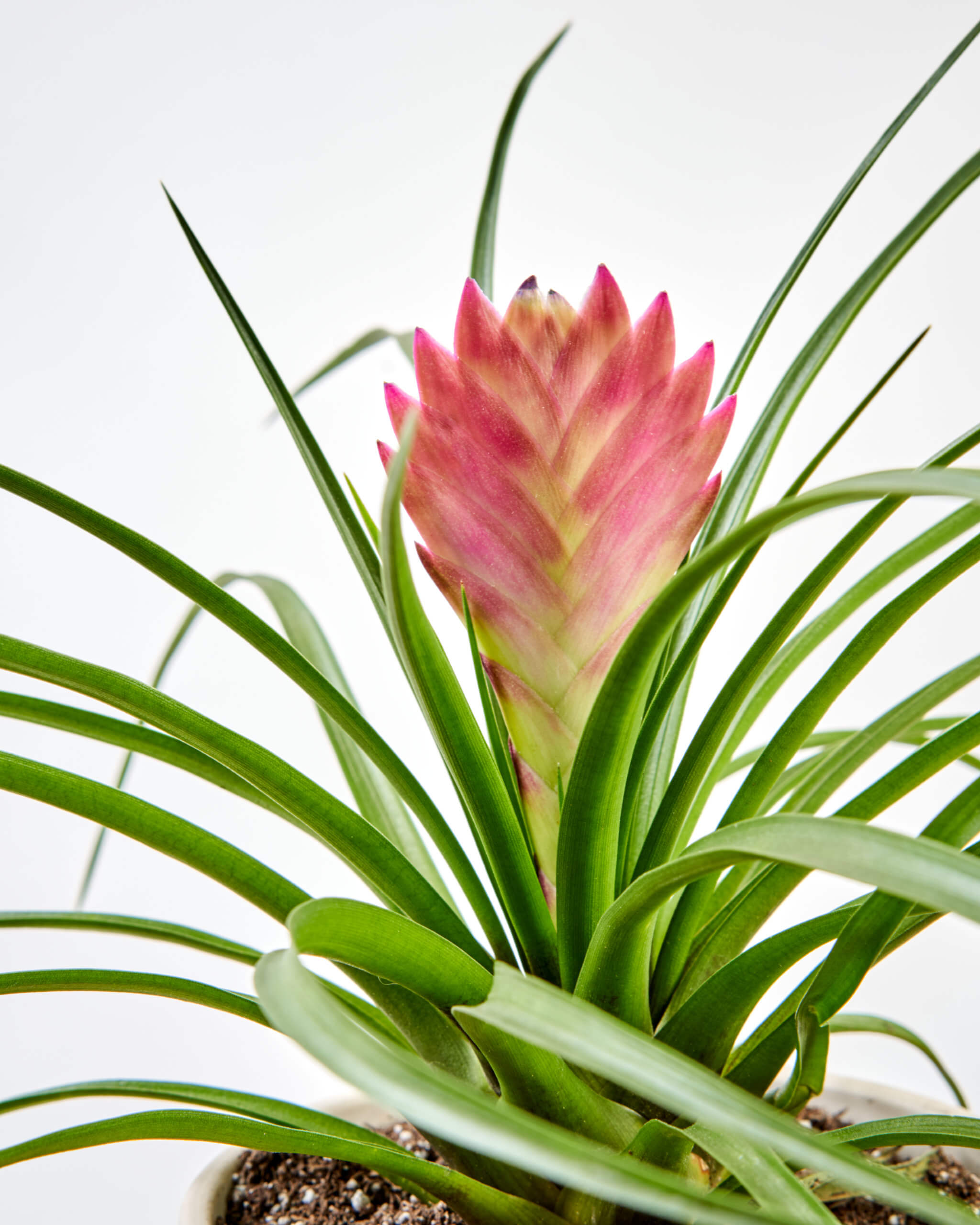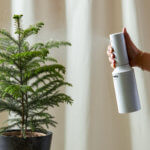Moisture
The most common cause of yellowing leaves among Bromeliad plants is improper soil moisture–in particular, overwatering. Only water your plant when the soil in the pot is almost completely dry.
When you water your Bromeliad, make sure you provide enough water so that liquid flows from the drainage hole at the bottom of the pot and into the saucer. It’s extremely important to discard any excess water in the saucer and not to let your plant sit in any standing water. Your Bromeliad is an epiphyte and will not respond well to “wet feet,” which will cause the roots to rot and lead to the eventual death of the plant.
In addition to watering the soil, make sure that the center of the foliage of your Bromeliad is always filled ¼ to ½ way full of water at all times. Every few weeks, be sure to empty it out any standing water, rinse, and fill with fresh water. This helps prevent salt and mineral buildup.
Humidity Level
Low humidity and dry soil cause leaves to droop and brown on their edges, later followed by entire yellowing, browning, and leaf drop. Misting the leaves of your Bromeliad often and using a humidifier or pebble tray will increase the humidity around your plant.
Improper Light
Bromeliads grow best when placed in medium to bright indirect sunlight, but they will adapt to lower light if needed. However, if placed in very low light, yellow leaves may develop. Be careful you’re not placing your plant in full sun either. When exposed to direct sunlight for too long, the foliage will burn.
Pests
A weakened or stressed Bromeliad is more susceptible to insect infestations. Sap-sucking bugs like spider mites can drain your plant of moisture. This problem quickly manifests itself by yellowing leaflets and fronds. Scale, mealybugs, and spider mites occur frequently in indoor conditions. If not killed early on, these small pests proliferate and move all along frond parts into nooks and crannies. The piercing mouths of the insects exhaust your plant and accelerate yellowing, especially if your plant is already unhealthy from poor lighting or improper soil moisture.
Some yellowing is natural
Is your Bromeliad pushing out new growth? If there is new growth on your plant and the yellowing leaves are older, particularly at the bottom of the plant, this yellowing is natural. Your plant sheds its old leaves and sends energy to new growth.










